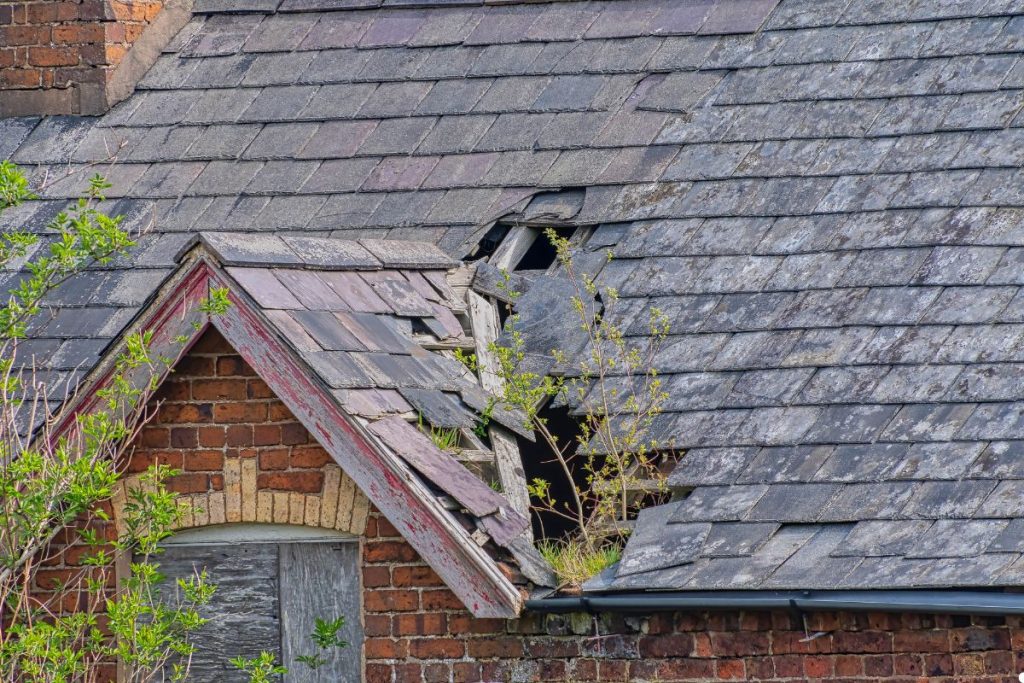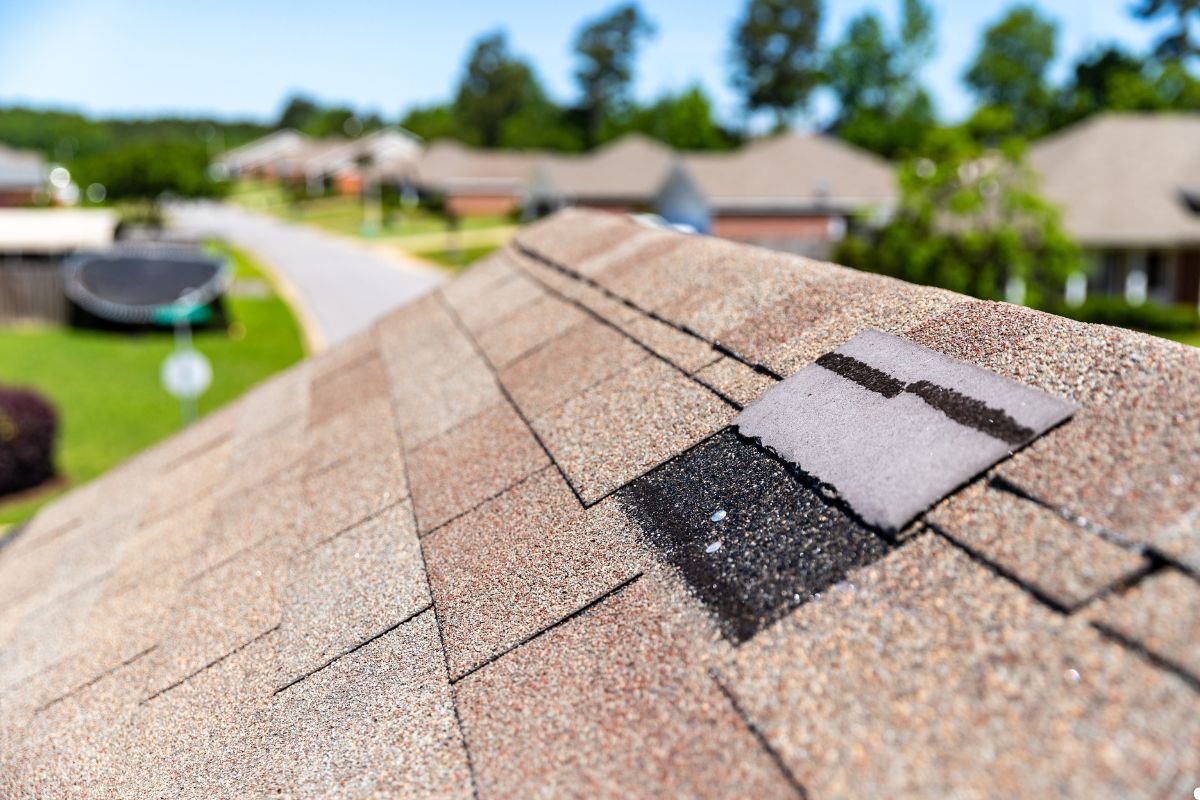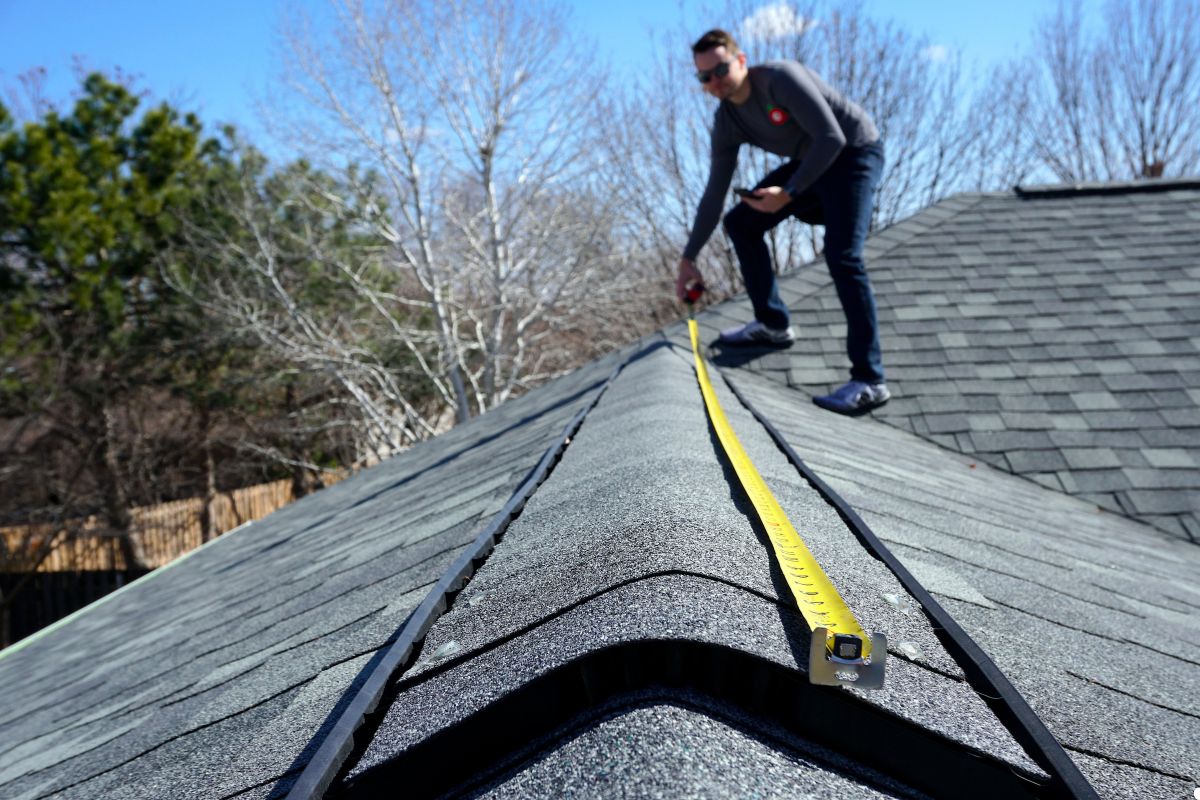
If your roof has suffered damage from a recent storm, understanding the extent of the damage, navigating the insurance claim process, and finding a reliable roofing contractor are crucial steps to protecting your home. This guide provides comprehensive information to help you through each stage, from identifying the signs of storm damage to ensuring a successful repair or replacement. Call us today for expert assistance and a free inspection!
Understanding Storm Damage and Your Roof
Severe weather can wreak havoc on your roof, leading to costly repairs if left unaddressed. Hail, wind, heavy rain, and falling debris can compromise the integrity of your roofing system. It’s essential to understand how these elements impact your roof to identify problems early and prevent further damage.
Recognizing the Signs of Roof Damage After a Storm
After a storm, carefully inspect your roof for any signs of damage. Some common indicators include:
- Missing or Damaged Shingles: Look for shingles that are cracked, curled, or completely missing.
- Granule Loss: Noticeable loss of granules from asphalt shingles can indicate hail damage or general wear and tear.
- Dented or Damaged Flashing: Check the flashing around chimneys, vents, and skylights for dents, cracks, or loose areas.
- Roof Leaks: Water stains on your ceilings or walls are a clear sign of a roof leak.
- Damaged Gutters: Dents, cracks, or loose sections in your gutters can indicate that they’ve been hit by debris.

Assessing the Damage: What to Look For
A thorough roof assessment goes beyond a quick visual inspection. Here’s what to look for:
- Hail Damage: Hailstones can leave small, circular dents on shingles, flashing, and gutters. These dents may be difficult to spot at first but can weaken the roof over time.
- Wind Damage: High winds can lift and tear off shingles, especially older or poorly installed ones. Look for shingles that are buckled, creased, or missing altogether.
- Tree Debris Damage: Falling branches and other debris can cause significant impact damage, leading to punctures, cracks, and broken shingles.
- Water Damage: Look for signs of water penetration, such as water stains, mold growth, or rotting wood.
Navigating the Insurance Claim Process for Roof Damage
Filing an insurance claim for roof damage can seem daunting, but understanding the process can make it much smoother. Here’s a step-by-step guide:
- Document the Damage: Take photos and videos of all visible damage to your roof and surrounding property.
- File Your Claim: Contact your insurance company as soon as possible to file a claim.
- Work with Your Insurance Adjuster: The insurance adjuster will inspect your roof and assess the damage. Be prepared to provide them with your documentation and answer their questions.
- Understand Your Policy: Review your insurance policy to understand your coverage limits, deductible, and any exclusions that may apply.
What to Do Before the Insurance Adjuster Arrives
Prepare for the insurance adjuster’s visit by:
- Gathering Documentation: Compile all relevant documents, including your insurance policy, photos of the damage, and any repair estimates you’ve obtained.
- Making Temporary Repairs: If possible, make temporary repairs to prevent further water damage. This could include tarping the affected area.
- Preparing Questions: Write down any questions you have for the adjuster regarding your policy, coverage, and the claims process.
Selecting the Right Roofing Contractor After a Storm
Choosing a qualified and reputable roofing contractor is essential for ensuring a proper repair or replacement. Consider the following factors:
- Local vs. National Companies: Local companies often have a better understanding of local building codes and weather conditions.
- Checking Credentials and Licensing: Verify that the contractor is licensed and insured in your state.
- Reading Reviews and Testimonials: Check online reviews and testimonials to get an idea of the contractor’s reputation and quality of work.
- Getting Multiple Bids: Obtain estimates from multiple contractors to compare pricing and services.
Red Flags to Watch Out For
Be wary of roofing contractors who:
- Solicit Door-to-Door: “Storm chasers” often go door-to-door after a storm, offering quick and cheap repairs.
- Demand Upfront Payment: Reputable contractors typically don’t require full payment upfront.
- Lack Proper Licensing and Insurance: Always verify a contractor’s credentials before hiring them.
- Offer Unusually Low Bids: A bid that seems too good to be true may indicate subpar work or materials.
Deciding Between Roof Repair and Roof Replacement
The decision to repair or replace your roof depends on several factors:
- Extent of Damage: Minor damage, such as a few missing shingles, may be repaired. Extensive damage, such as widespread hail damage or a large leak, may require a full replacement.
- Age of Roof: If your roof is nearing the end of its lifespan, a replacement may be more cost-effective than a repair.
- Cost Comparison: Compare the cost of repairing the roof versus replacing it. In some cases, a replacement may be the better long-term investment.
Factors Influencing the Decision
Consider these factors when deciding between repair and replacement:
- Roofing Materials: The type of roofing material can influence the repair or replacement decision. For example, asphalt shingles may be easier to repair than tile roofs.
- Long-Term Costs: Consider the long-term costs of both repair and replacement. A replacement may have a higher upfront cost but can save you money on future repairs.
- Property Value: A new roof can increase the value of your property, making it a worthwhile investment.
Protecting Your Home Before Repairs Can Begin
Take steps to protect your home from further damage while waiting for repairs:
- Tarping Your Roof: Cover damaged areas with a tarp to prevent water from entering your home.
- Preventing Further Water Damage: Remove any standing water and dry out affected areas to prevent mold growth.
- Safety Precautions: Use caution when working on your roof and avoid walking on damaged areas.
DIY vs. Professional Tarping
While DIY tarping can provide temporary protection, professional tarping offers several advantages:
- Expertise: Professionals have the experience and equipment to properly secure the tarp and prevent it from blowing away.
- Safety: Tarping a roof can be dangerous, especially after a storm. Professionals have the necessary safety equipment and training.
- Warranty: Some professional tarping services offer a warranty on their work.

Preventing Future Storm Damage to Your Roof
Take proactive steps to protect your roof from future storm damage:
- Regular Inspections: Have your roof inspected regularly by a qualified professional.
- Tree Trimming: Trim any trees that are overhanging your roof to prevent branches from falling during storms.
- Gutter Cleaning: Keep your gutters clean to ensure proper water drainage.
- Choosing Durable Roofing Materials: Consider using durable roofing materials that are resistant to hail and wind damage.
Long-Term Roof Care
Implement these long-term roof care practices:
- Address Minor Issues Promptly: Repair any minor damage, such as missing shingles or small leaks, as soon as possible.
- Maintain Proper Ventilation: Ensure that your attic is properly ventilated to prevent moisture buildup.
- Consider a Roof Coating: A roof coating can provide added protection against the elements and extend the life of your roof.
Frequently Asked Questions About Storm Damage Roofing
How long do I have to file a storm damage claim?
The timeframe for filing a claim varies by state and insurance policy. Contact your insurance company as soon as possible after the storm. Don’t wait to file your claim—deadlines vary by state! Contact us today to get started.
Will my insurance rates go up if I file a claim?
It’s possible, but not guaranteed. It depends on your insurance company’s policies and your claim history.
What if my insurance company denies my claim?
You have the right to appeal the denial. Consult with a public adjuster or attorney if necessary.
How do I know if my roofer is licensed and insured?
Ask for proof of licensing and insurance and verify it with the relevant state agencies.
What roofing materials are most resistant to storm damage?
Impact-resistant shingles, metal roofing, and tile roofing are generally more durable than standard asphalt shingles.
How often should I have my roof inspected?
At least once a year, and after any major storm.
What should I do if I find mold after a roof leak?
Contact a mold remediation specialist to safely remove the mold and prevent further spread.
Protecting Your Home from Storm Damage: A Summary
Storm damage can have a significant impact on your roof, but with the right knowledge and resources, you can protect your home and ensure a successful repair or replacement. You can also check Thomas Roofing of central Florida for additional information. Remember to identify damage early, navigate the insurance claim process carefully, and choose a qualified roofing contractor. Taking these steps will help you maintain the integrity of your roof and safeguard your home for years to come. Call us today for a free inspection and expert assistance!

